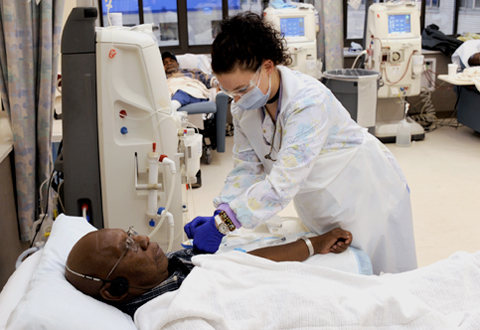Center for Health Equity Research and Promotion
High value care for high risk Veterans

Navathe and his colleagues will apply statistical and machine learning tools to classify HNHC veterans into subgroups based on clinical information, as well as demographics and social determinants of health. By developing clinically actionable data-driven subgroups of HNHC veterans, the VA may better identify gaps in its clinical and care management programs and more effectively leverage resources to tailor specific interventions for their needs.
One compelling strategy for improving VHA care is to focus on high-need, high-cost (HNHC) Veteran patients, who account for the majority of poor outcomes and frequent health utilization. However, successfully managing HNHC veterans is challenging because they have a wide variety of clinical conditions and needs, including complex chronic conditions (e.g. frailty), challenging psycho-social circumstances, advanced diseases (e.g., metastatic cancer and dementia) and catastrophic life events.
Amol Navathe, MD, PhD, CHERP Core Investigator, leads a newly-funded study, “Segmenting high-need, high-cost veterans into potentially actionable subgroups,” to apply clustering methods to available data and identify key insights into how to tailor care for vulnerable Veteran patients.
Navathe and his colleagues will apply statistical and machine learning tools to classify HNHC veterans into subgroups based on clinical information, as well as demographics and social determinants of health. By developing clinically actionable data-driven subgroups of HNHC veterans, the VA may better identify gaps in its clinical and care management programs and more effectively leverage resources to tailor specific interventions for their needs.
Navathe’s Co-Investigators include Kevin Volpp, MD, PhD and Peter Groeneveld, MD, MS, both of the Philadelphia site of CHERP, Ann-Marie Rosland, MD, MS, from CHERP’s Pittsburgh site, and Matthew Maciejewski, PhD, from the HSR&D COIN in Durham.
While VHA has a highly successful, national Patient Aligned Care Team (PACT) model, care management for HNHC Veterans has proved challenging.
“Figuring out how best to help VA Patient Aligned Care (PACT) teams identify, assess, care for, and coordinate care for complex high-risk primary care patients is of utmost importance to achieve the VA’s goal to use the PACT model to its fullest potential to improve access and quality of care for Veterans,” according to Ann-Marie Rosland, MD, a Co-Investigator on this study and leader of the national workgroup for PACT care for high-risk patients. “In our high-risk workgroup we are emphasizing the potential for existing VA data to accurately and efficiently identify care needs for our most complex primary care patients, to facilitate proactive, team-based care, and to help prevent unnecessary urgent care and hospitalizations. Dr. Navathe’ s work on applying natural language processing (NLP) to detect patient social factors not found in billing codes is a very promising way to improve our ability to identify actionable needs of complex patients at a population level.”
This article does not necessarily reflect the views of the VA or the US government.



















